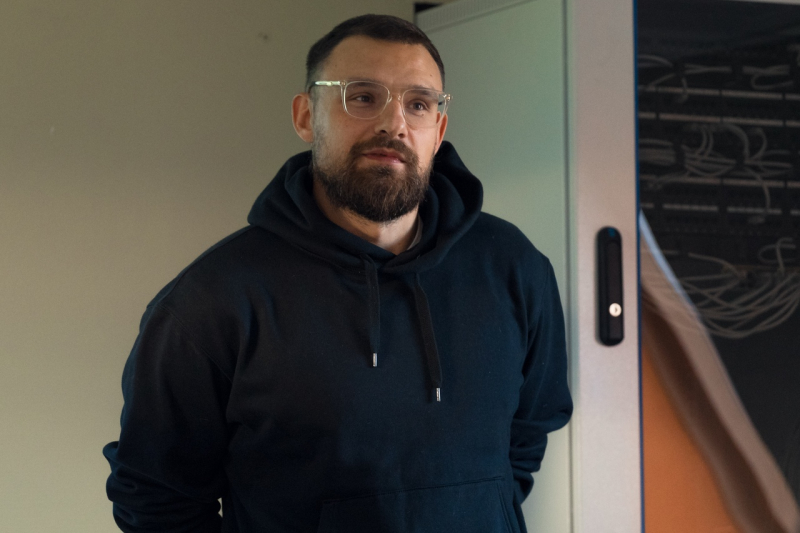Compared to Russia, the US has a bigger venture capital and thus more opportunities to invest. Moreover, entering the American market is the first step towards international success. Those were the reasons for entering the American market suggested by the audience – and Mikhail Gavrilov deemed them absolutely correct. Furthermore, the US generally has a more developed startup and investment culture with an established community. Even large companies tend to invest in startups at early stages. For instance, Google acquires an average of one startup a week.
Despite all that, Russia is a good country to found a startup in. There are well-trained engineers, salaries that reach a global average, and low prices. The cost of living and running a business is much lower because you spend less on infrastructural objects, such as offices and apartments. Russians also have a mentality closer to the Western one than people from India, China, or Pakistan. However, you have to understand that if your product went off in Russia, it does not mean that it will be equally successful in the US. At least, that’s what American investors would think.

“Many people think that if they attract a thousand users in Russia and collect 100,000 rubles in sales, they will arrive at the other side of the pond and say, “Look at me, I am cool”. American investors will only care about the American traction,” says Mikhail.
Americans also don't know much about Russian education.That’s why one of the ways to be recognized is to take online courses in American universities.
According to Mikhail, you can stay in your country if your project is not made for the international market or it can be supported remotely – or with a minimal amount of English-speaking specialists. However, if your work includes personal meetings and negotiations, you can’t do without an accelerator and the eventual move. You have to be ready to sell your own idea.
Mikhail Gavrilov advises to start your way into the international market with social media.

Step 1. Become a forum denizen
That includes both international forums, like Reddit and Quora, and Russian ones, like Pikabu and Habr. Level up your accounts by entering relevant communities and following influencers in your field. You can also purchase an already advanced account, for instance, with karma on Reddit. It will help you gain users’ trust without getting banned by the website. If you need a quick boost to your account and you cannot purchase an old one, it’s a good strategy to post topical memes – those are always popular.
Take note of the details: you can’t insert links or directly advertise your product. Your posts always have to be the real deal. Also, you can’t sign up for forums with your company name unless you are a cool and established startup already.
Mikhail also advises to use Grammarly to always keep your grammar at bay, but an ideal solution for that would be to hire native speakers as correctors for your websites and texts – that will give them an American feel. And to communicate in messengers or via phone calls you can purchase a virtual American SIM card.
With the help of social media, you can evaluate the news bubble around your field and learn about the existing solutions, which will save you a lot of time on international market research.
After garnering reviews from your potential users and adapting your idea, you can go on to launch the beta testing of your startup.

Step 2. It’s time for beta testing
There are special platforms for that, such as Product Hunt, BetaList, or a more advanced KickStarter. You can find your beta users on Reddit, the main thing here is to use an already well-established account and offer to take part in beta testing via private messages. It’s also better to offer small bonuses – so that you can attract more users. Feedback is extremely important for a young startup, as it helps you understand what you should change before a full-scale launch.
Step 3. Make your first sales without expensive advertising campaigns
Before you have the funds to select your target and promote your startup for a lot of money, there is a number of tricks you can use:
- Barter trades with microinfluencers (with 5,000-15,000 followers). For example, you can offer them a promo code for your product in exchange for a review of your product on their Instagram or TikTok;
- Demonstrating your startup’s value for a specific community. For instance, you can sign up for Discord, Slack, or other resources to find a community of your target audience and tell them how they can benefit from your product. To avoid being banned, it’s better to approach such platforms via moderators whom you can also offer promo codes or permanent access to your app;
- “Cold” messages in LinkedIn, for instance, with Octopus CRM, and mailout.

Step 4. Attract your first investments
It’s easier to attract investments from those nearest to you – investors of your previous projects, specialized foundations, and angel investors after an intro from their portfolio company. It means that you have to be introduced to an investor by a startup they’d already invested in. It will be much more effective than a cold mailout. Your connections to other more experienced entrepreneurs play a vital role here.
“Investments mean that you trust the people you give your money to. You need to know more about them than any Facebook message can tell,” explains Mikhail.
He names YC Startup School created by YCombinator as an example of a networking platform. It hosts group calls with other startup founders, where you can meet people who are at a later stage than you in their projects. They can introduce you to their investors. There are also various conferences and meetups.
On such events, the most important thing is not to meet investors, who are bound to forget you, but communicate with other startupers, who started a year or two earlier than you. They are aware of your challenges and can help you, whereas investors don’t have that aim.
Mikhail also suggests applying for accelerators, even at the first stages, because the more attempts you make, the better your chances of getting an investment are. Here is his list of international accelerators: AngelPad, Ycombinator, TechStars, Alchemist, SeedStars, SkyDeck, Plug&Play, Strata, and 500 startups. There is also the Russian Internet Initiatives Development Fund. Another tip – sign up for F6S, a free network for startupers and investors.

However, you also have chances to attract your audience with cold messages. For that, you can use AngelList, Signal platform by the NFX foundation, or CrunchBase. The access to CrunchBase is free, but Mikhail advises to ask some other startupers to download a complete list of investors in your field and find their emails on LinkedIn on your own.
A lifehack for pitching your startup is making a one-minute video. There, you have to tell about your product yourself, it should not be an ad. Don’t strive for studio quality or you will lose your trust – it has to be not unlike a Zoom presentation. Never say how much money you need. According to Mikhail, a public offer can be penalized in the US – moreover, it’s considered amateur. You can say that you are now attracting investments and will be ready to discuss an exact offer later.
Ideally, after establishing contact with your investor, you should provide them with useful information in each new email. For instance, links to research or experts’ reviews that prove your startup’s relevance.

Step 5. Launch your company
It’s better to do this after you’ve already found investors, because many services you would need, including those of a lawyer, have to be paid for.
If you are based in Russia but want to sell your product in the US, use a combo of CloudPayments and PayPal for international payments. Clerky or Stripe Atlas will help you register your company. They can also help you with issuing stocks.
It’s important to get your EIN, employer identification number, in the US. If you are not a US-citizen and you don’t have a social security number (SSN), the process of acquiring your EIN can take up to three months. There is a lifehack for that.
“If you have a lawyer or any other acquaintance in the USA with a SSN, they can easily send a fax from your company to the Internal Revenue Service – and your EIN will be ready in one day,” – says Mikhail.
As for lawyers, you should only look for them through your network or topical communities, such as Silicon Pravda or Startup котики (both in Russian).





